Altar in a modern context
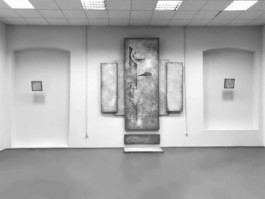
Altar in a modern context. 1.2., 350 × 200 × 7 cm, Acrylic, gesso, wooden boards, MDF panels, 2021
In Altar in a modern context. 1.2., I use a minimalist mode of presentation, referencing the minimalists of the 20th century, particularly the Rothko Chapel. While studying in a workshop focused on monumental art and temple culture, I chose to turn to the Western tradition and reinterpret the space of the Catholic Church as a Western European analogue to the Orthodox iconostasis, assigning it a new role in a contemporary context.
The central idea of this part of the project is to explore the role of fear and pain through introspection. Fear, as a senseless phenomenon, lingers in the air and compels us to search for its causes. It shatters the familiar structure of life, seeking out its cracks and weak points in order to provoke a conflict with existence itself. Considering the significance of the iconostasis and altar in today's context, I chose to elevate the metaphysical image of pain and place it where religious imagery would traditionally reside.
As I see it, the image of pain and fear represents a refusal to settle for an illusory peace of mind. “Work addiction” becomes the only escape in the modern world. By constantly acting, enslaved by the fruits of our labor, we become mere extensions of those fruits (objects), and unconsciously avoid facing ourselves, because doing so reveals a deep sense of emptiness. In this case, pain becomes a form of salvation, alleviating that emptiness. And thus, it becomes chronic.
This is an iconostasis of lifeless, industrial color, its texture reminiscent of a tombstone or an old concrete wall. At its core are compositionally arranged examples of engineering calculations, within which pulsating forms reside—a formal representation of pain and fear.
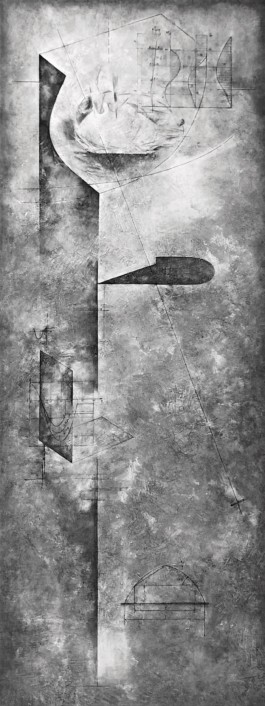
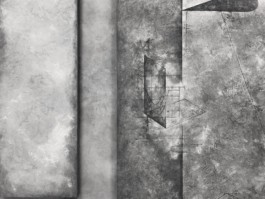
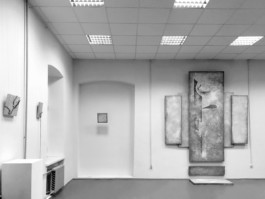
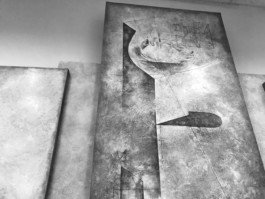
Altar in a modern context. 1.2., 350 × 200 × 7 cm, Acrylic, gesso, wooden boards, MDF panels, 2021. Close-up
Altar in a modern context

Altar in a modern context. 1.2., 350 × 200 × 7 cm, Acrylic, gesso, wooden boards, MDF panels, 2021
In Altar in a modern context. 1.2., I use a minimalist mode of presentation, referencing the minimalists of the 20th century, particularly the Rothko Chapel. While studying in a workshop focused on monumental art and temple culture, I chose to turn to the Western tradition and reinterpret the space of the Catholic Church as a Western European analogue to the Orthodox iconostasis, assigning it a new role in a contemporary context.
The central idea of this part of the project is to explore the role of fear and pain through introspection. Fear, as a senseless phenomenon, lingers in the air and compels us to search for its causes. It shatters the familiar structure of life, seeking out its cracks and weak points in order to provoke a conflict with existence itself. Considering the significance of the iconostasis and altar in today's context, I chose to elevate the metaphysical image of pain and place it where religious imagery would traditionally reside.
As I see it, the image of pain and fear represents a refusal to settle for an illusory peace of mind. “Work addiction” becomes the only escape in the modern world. By constantly acting, enslaved by the fruits of our labor, we become mere extensions of those fruits (objects), and unconsciously avoid facing ourselves, because doing so reveals a deep sense of emptiness. In this case, pain becomes a form of salvation, alleviating that emptiness. And thus, it becomes chronic.
This is an iconostasis of lifeless, industrial color, its texture reminiscent of a tombstone or an old concrete wall. At its core are compositionally arranged examples of engineering calculations, within which pulsating forms reside—a formal representation of pain and fear.




Altar in a modern context. 1.2., 350 × 200 × 7 cm, Acrylic, gesso, wooden boards, MDF panels, 2021. Close-up